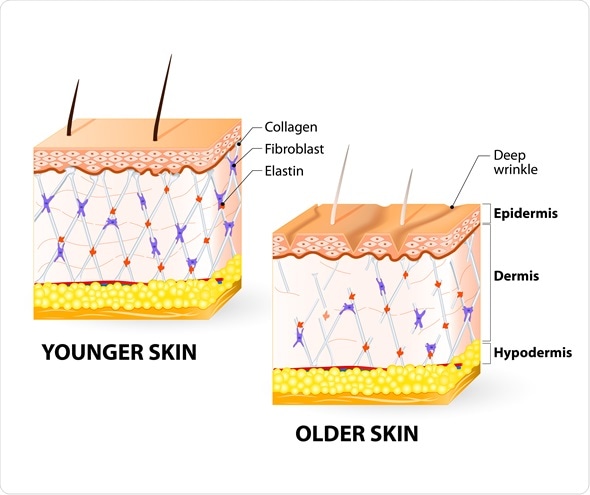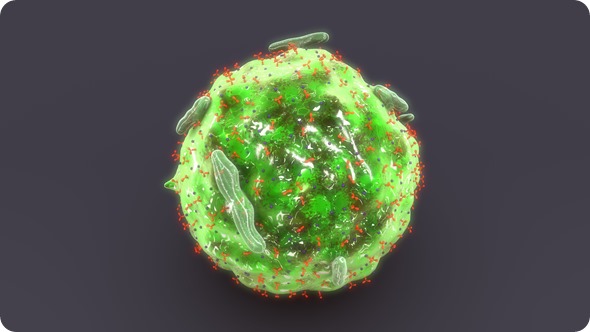The dermis is the layer of skin that lies beneath the epidermis and above the subcutaneous layer. It is the thickest layer of the skin, and is made up of fibrous and elastic tissue. Thus it provides strength and flexibility to the skin.

Layers
The dermis is comprised of two layers: the papillary dermis and the reticular dermis.
The papillary dermis is the more superficial of the two, and lies just beneath the epidermal junction. It is relatively thin and is made up of loose connective tissue, which includes:
- Capillaries
- Elastic fibers
- Reticular fibers
- Collagen
The reticular dermis is the deeper and thicker layer of the dermis, which lies above the subcutaneous layer of the skin. It contains dense connective tissue, which includes:
- Blood vessels
- Elastic fibers (interlaced)
- Collagen fibers (in parallel layers)
- Fibroblasts
- Mast cells
- Nerve endings
- Lymphatics
Additionally, there is a substance surrounding the components in the dermis. This has a gel-like consistency, because it contains mucopolysaccharides, chondroitin sulfates, and glycoproteins.
Types of cells
Fibroblasts are the primary cell type present in the dermis and are responsible for the production and secretion of procollagen and elastic fibers. Procollagen is then catalyzed by enzymes to form collagen, which is finally cross-linked to create strong parallel layers.
The collagen accounts for up to 70% of the weight of the dermis, primarily Type I collagen with some Type III collagen. Elastic fibers, on the other hand, account for less than 1% of the dermal weight, although they still play an important functional role to resist forces that may deform the shape of the skin.
The two types of fibers are bound together by a mucopolysaccharide gel, through which the nutrients and waste products can diffuse to other areas of tissue.
Other types of cells in the dermis include:
- Mast cells: contain granules with histamine and other chemicals, which are released from the cell if it is disturbed or damaged
- Vascular smooth muscle cells: responsible for the contraction or dilation of the blood vessels to maintain homeostasis of body temperature

Function
The primary role of the dermis is to support the epidermis and enable the skin to thrive. It also plays a number of other roles due to the presence of nerve endings, sweat glands, sebaceous glands hair follicles, and blood vessels.
Nerve endings in the dermis are able to detect touch, temperature, pressure, and pain stimuli. The number of nerve endings in the different areas of the skin varies providing different degrees of sensitivity to different areas, with more endings in highly sensitive areas.
Sweat glands in the dermis are responsible for the production of sweat in response to certain conditions, such as heat and stress. As the sweat evaporates off the skin, it can help in cooling the body down to maintain homeostasis.
Apocrine sweat glands, which are a specific type of sweat gland present in the armpits and genital region, produce a thick, oily sweat that creates the characteristic body odor when bacteria on the skin digest it.
Sebaceous glands in the dermis are responsible for the secretion of sebum, an oily substance that helps to keep the skin moist and helps to prevent the entry of foreign substances.
Hair follicles in the dermis produce hair around the body. There are various types of hair on different areas of the skin. These can play an important role in the regulation of body temperature, protection from injury and the enhancement of sensation.
Blood vessels in the dermis carry nutrients to and discard waste products created by metabolism within the dermis and epidermis, in addition to helping to regulate the temperature of the body.
In a hot environment, the blood vessels dilate to increase the volume of blood circulating near the surface of the skin, and thus release heat. On the contrary, the blood vessels contract in response to a cold environment to retain more heat within the body.
References